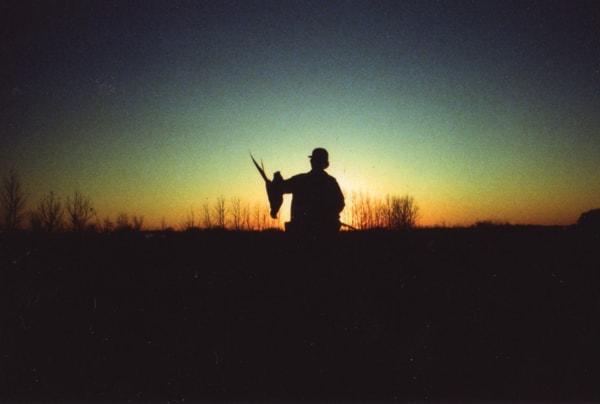Upland Birds Alberta, a grassroots organization of concerned individuals “with a passion for Alberta’s pheasant hunting traditions.”
UBA is now working with various organizations, and private and government partners to influence greater investment in Alberta’s pheasant release program.
UBA says that only 14,000 hatchery pheasants will be released in Alberta this year and there is a real risk that the program will disappear forever next year. They worry that unless releases increase to the 70,000 birds annually of the mid-80s, the pheasant itself, and the Alberta tradition of pheasant hunting will be wiped out.
Sorry UBA, having hunted pheasants in Alberta for 65 of the 103 years the pheasant has been here, I’m not with you on this, and just can’t support increased or any planting of hatchery birds in Alberta.
The fact is we already have a self-sustaining population of wild pheasants in all the really suitable wild pheasant habitat there is in Alberta. In the three seasons prior to the winter of 2008, Alberta had probably its highest pheasant populations since the bonanza years just after the war.
This is not just my opinion, but also verified by the Partners in Habitat Development (PHD) program, the only people now conducting population surveys based on annual crowing counts in Alberta. I did hunt those great recent three seasons in many of the same places I hunted as a kid growing up in Brooks, back in the days when my home town was known as “the pheasant capital of North America.”
The wild pheasants achieved those recent high populations basically by themselves, aided and abetted by breaks from the weather and some of the excellent habitat initiatives of PHD and partner landowners in most of the irrigation districts in Alberta, and particularly in the Eastern Irrigation District, headquartered in Brooks. Certainly, there was no government help; we hadn’t even had a government upland game specialist in Alberta for more than a decade.
Since the tough winter of 2008, we have had more hard winters and long, cold, wet springs (including 2011), all of which kill pheasants, and particularly chicks. A year ago, PHD’s spring crowing counts showed the lowest average per stop in eight years, and was down 65 per cent from 2009. Considering last winter and this spring, I shudder to contemplate what the 2011 and 2012 spring crowing counts will show.
But, given some breaks from the weather, the wild pheasants in good wild pheasant habitat will breed their numbers back up, especially if we don’t dump hatchery birds hither and yon. It is a gross management error to impose hatchery stock on the habitat of a self-sustaining population. Years ago in Alberta we stopped putting hatchery trout into rivers and streams that had a self-sustaining native population, based on studies at Gorge Creek that showed few of the stocked fish survive. Further studies in Montana showed that, as well, imposing stocked fish into their habitat harmed the native populations.
More recently, studies have shown the same applies to pheasants: putting hatchery birds in their habitat harms the native birds by decreasing the food supply, attracting predators, including human hunters, introducing diseases and diluting the gene pool. So why do we do it? We don’t stock ranched deer into wild habitat even after disastrous winter kills.
The owners of the best places I have hunted pheasants over the last two decades (including me) will not knowingly permit hatchery birds on the premises. Alberta’s Designated Pheasant Release Sites (killing grounds) are zoos and jokes — good wild habitat with only planted birds, all shot by the time the next truckload arrives. On private land where private paid-for hunts are conducted, wild birds are routinely killed out of season along with the hatchery cannon fodder and formerly great wild pheasant habitat is bereft of wild birds.
Raising pheasants for release, then releasing them, is expensive. To put the 70,000 birds in the field as requested by UBA would cost, minimally, $1 million annually, money that would be far better spent on aiding and abetting the wild pheasants of Alberta in keeping their own numbers up.
A start would be to have a pheasant specialist in Sustainable Resource Development who understands the historical importance to Albertans of the introduced and now wild pheasant population of Alberta.
Our present upland bird biologist is a grouse specialist and his current efforts are focused on these native birds, which most Alberta hunters take when the cycles are high and leave alone when they’re low.
Over the years, I have heard too many pleas for increased pheasant releases. They have little to do with the future of pheasants in Alberta and everything to do with the immediate gratification of shooters who delude themselves that executing planted birds is pheasant hunting.
The answer is leaving the shooters to patronize the commercial pheasant shooting operations, such as the Canadian Pheasant Company, and pay the full cost, and not subsidizing their habit with public money.
Bob Scammell is an award-winning outdoors writer living in Red Deer.
